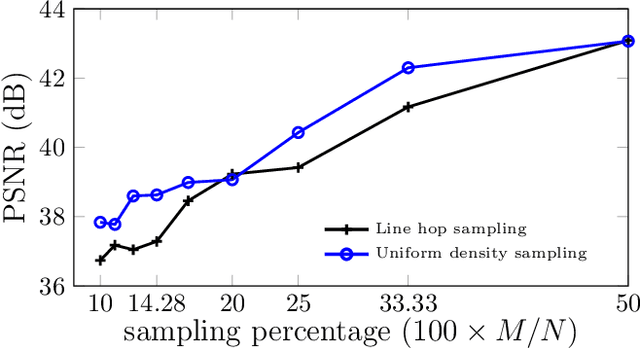Alex Robinson
Compressive Scanning Transmission Electron Microscopy
Dec 22, 2021


Abstract:Scanning Transmission Electron Microscopy (STEM) offers high-resolution images that are used to quantify the nanoscale atomic structure and composition of materials and biological specimens. In many cases, however, the resolution is limited by the electron beam damage, since in traditional STEM, a focused electron beam scans every location of the sample in a raster fashion. In this paper, we propose a scanning method based on the theory of Compressive Sensing (CS) and subsampling the electron probe locations using a line hop sampling scheme that significantly reduces the electron beam damage. We experimentally validate the feasibility of the proposed method by acquiring real CS-STEM data, and recovering images using a Bayesian dictionary learning approach. We support the proposed method by applying a series of masks to fully-sampled STEM data to simulate the expectation of real CS-STEM. Finally, we perform the real data experimental series using a constrained-dose budget to limit the impact of electron dose upon the results, by ensuring that the total electron count remains constant for each image.
Sketch2code: Generating a website from a paper mockup
May 09, 2019



Abstract:An early stage of developing user-facing applications is creating a wireframe to layout the interface. Once a wireframe has been created it is given to a developer to implement in code. Developing boiler plate user interface code is time consuming work but still requires an experienced developer. In this dissertation we present two approaches which automates this process, one using classical computer vision techniques, and another using a novel application of deep semantic segmentation networks. We release a dataset of websites which can be used to train and evaluate these approaches. Further, we have designed a novel evaluation framework which allows empirical evaluation by creating synthetic sketches. Our evaluation illustrates that our deep learning approach outperforms our classical computer vision approach and we conclude that deep learning is the most promising direction for future research.
 Add to Chrome
Add to Chrome Add to Firefox
Add to Firefox Add to Edge
Add to Edge